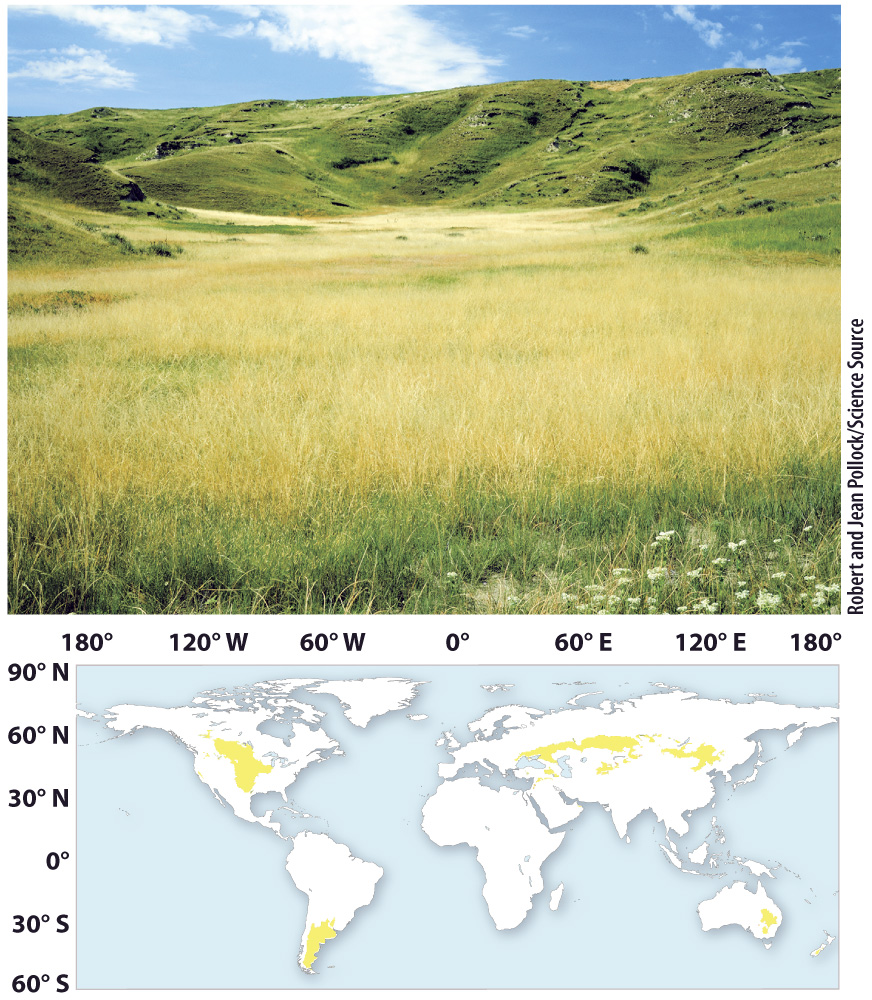
Temperate grassland
Before human settlement, this biome occupied most of the midwestern United States and south central Canada, dominated by blue-